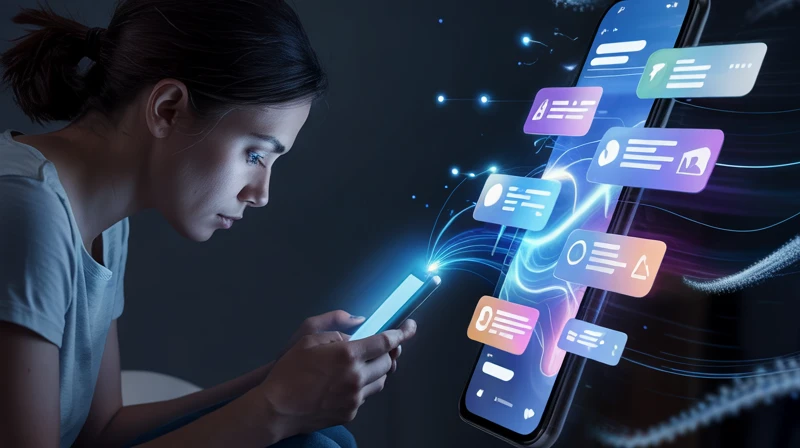Mental Wellness in the Digital Age
In today’s hyper-connected world, where screens dominate work, communication, and even relaxation, mental wellness has never been more important—or more challenged. As technology becomes deeply embedded in our daily routines, it’s crucial to examine how constant digital engagement affects our emotional and psychological well-being.
This article explores the hidden toll of digital stress, the psychological consequences of constant connectivity, and—most importantly—practical, science-backed strategies for maintaining a healthier relationship with technology. Whether you’re feeling overwhelmed by screen time or simply seeking more mindful digital habits, this guide offers insights to help you reclaim balance in the digital age.
Digital stress refers to the mental strain caused by excessive digital engagement and constant connectivity. From an endless stream of emails and app alerts to social media pressures and remote work demands, today’s technology-driven environment rarely gives our minds a break.
While tech offers convenience and productivity, it can also overwhelm our cognitive bandwidth—leading to mental fatigue, heightened anxiety, poor sleep, and even symptoms of depression. The brain is wired for recovery, yet the “always-on” digital culture often prevents the rest we need.

Real-Life Insight: John’s Struggle with Digital Overload
Take John, a 32-year-old software engineer. Despite being passionate about his work, he began noticing signs of burnout—frequent insomnia, irritability, and lingering anxiety. His therapist helped him trace the root cause: a relentless habit of scrolling through Slack, Reddit, and LinkedIn late into the night.
The problem wasn’t just screen time—it was the mental pressure to stay constantly connected, informed, and available. Notifications blurred the boundaries between work and personal life, leaving his mind overstimulated even after logging off.
To reclaim his mental clarity, John implemented small but effective changes:
Set a nightly “digital sunset”—no screens after 9:30 p.m.
Turned off non-essential notifications
Used focus modes during work hours
Reserved mornings for non-digital activities like reading or stretching
The result? Within weeks, John reported better sleep, a calmer mindset, and renewed energy during the day.
Social Media and Mental Health: The Comparison Trap
Social media platforms like Instagram, Facebook, and Twitter are designed to keep us engaged, but they can also lead to unhealthy comparisons. Research shows that prolonged exposure to idealized images and lifestyles can cause feelings of inadequacy, depression, and low self-esteem, especially among young people.
Personal Story: Emily’s Journey to Digital Detox
Emily, a college student, felt overwhelmed by the constant pressure to keep up with her peers on social media. Every time she logged in, she felt she was falling behind—whether it was about vacations she couldn’t afford or milestones she hadn’t yet achieved. This constant comparison began to take a toll on her mental health. She decided to take a break from Instagram and Twitter for a month. During this time, she focused on her hobbies, such as painting and yoga, and reconnected with friends in person. Emily noticed a remarkable improvement in her mental clarity and happiness. Her digital detox allowed her to regain her sense of self-worth independent of social media validation.
The Impact of Screen Time on Mental Health
Excessive screen time has been linked to various mental health issues, including anxiety, depression, and attention disorders. Studies have shown that spending more than two hours a day on digital devices can increase the risk of mental health issues in both adults and children.
Case Study: The Effects of Screen Time on Children
A study conducted by the National Institutes of Health (NIH) followed more than 11,000 children to understand the effects of screen time on their developing brains. The results were alarming: children who spent more than two hours a day on screens scored lower on thinking and language tests. Moreover, those who spent more than seven hours a day on digital devices experienced thinning of the brain’s cortex, the area related to critical thinking and reasoning.

Strategies for Digital Wellness: Practical Tips
- Set Boundaries: Allocate specific times for checking emails and social media. For instance, designate one hour in the morning and one hour in the evening for these activities. Avoid using digital devices an hour before bedtime to promote better sleep.
- Mindful Consumption: Be mindful of the content you consume online. Follow accounts that inspire and uplift you rather than those that cause stress or anxiety. Curate your feed to reflect positivity and motivation.
- Digital Detox: Take regular breaks from digital devices. This can be a weekly “no-screen Sunday” or a month-long break from social media. Use this time to engage in offline activities like reading, hiking, or spending quality time with family and friends.
- Use Technology Mindfully: Leverage technology for your benefit. Apps like Headspace or Calm can help with meditation and stress management, while tools like Forest can encourage you to stay focused and present. Additionally, setting screen time limits on your devices can help manage and reduce unnecessary usage.
- Create Tech-Free Zones: Designate certain areas in your home, such as the dining room or bedroom, as tech-free zones. This helps in establishing boundaries and encourages meaningful interactions without digital distractions.
- Develop a Morning Routine Without Technology: Start your day with activities that don’t involve screens. This could be stretching, journaling, meditating, or simply having a quiet breakfast. A tech-free morning sets a positive tone for the day.
Digital Wellness Programs: A Corporate Perspective
Many companies are now recognizing the impact of digital stress on employee productivity and well-being. Organizations like Google and Microsoft have implemented digital wellness programs that encourage employees to disconnect after work hours and provide resources for mental health support.
Example: Microsoft’s Flexible Work Initiative
Microsoft introduced a flexible work initiative that allows employees to choose their work hours and incorporate digital detox practices. They also offer workshops on mindfulness and stress management. This initiative has led to increased job satisfaction and reduced burnout rates. By allowing employees to set their own schedules, Microsoft has empowered them to find a work-life balance that suits their needs.
Case Study: Google’s Digital Wellbeing Initiative
Google’s Digital Wellbeing initiative is a comprehensive program that aims to help users find a healthier balance with technology. It includes tools like Focus Mode, which helps users pause distracting apps, and Wind Down, which reduces screen brightness and notifications in the evening to encourage better sleep habits. Google also provides resources and guidelines for employees on how to manage screen time effectively.
The Role of Education in Promoting Digital Wellness
Educational institutions play a crucial role in promoting digital wellness among young people. Schools and colleges are now incorporating digital literacy programs that teach students how to use technology responsibly and mindfully.

Example: Digital Literacy Program at XYZ School
XYZ School has implemented a digital literacy program that educates students about the effects of excessive screen time and the importance of digital detox. The program includes workshops on managing social media use, understanding digital footprints, and strategies for maintaining mental wellness in a digital world. Feedback from students and parents has been overwhelmingly positive, highlighting a noticeable improvement in students’ screen time habits and overall well-being.
Conclusion: Finding Balance in a Digital World
In an age where digital demands are constant and screen time is nearly unavoidable, maintaining mental wellness requires intentional choices and consistent boundaries. While technology offers incredible tools for communication, creativity, and convenience, it can also silently chip away at our peace of mind when left unchecked.
By practicing digital mindfulness, scheduling screen-free time, and setting healthy boundaries, we can reclaim control over our attention and energy. Remember: technology should enhance your life—not exhaust it.
Personal Reflection: My Digital Wellness Journey
As someone who works in content creation, I’ve often found myself tethered to devices—from morning emails to late-night editing sessions. Over time, I noticed the toll this constant connection was taking on my focus, sleep, and overall joy.
My turning point came when I began implementing small, deliberate changes:
Morning walks without my phone
Weekend digital detoxes
Using focus timers to minimize mindless scrolling
These habits didn’t just improve my productivity—they brought back a sense of balance and clarity I hadn’t realized I’d lost.
Sharing these strategies isn’t just about best practices—it’s about helping others feel less alone in their struggle. If even one reader feels more empowered to take back control of their digital habits, this message has done its job.

Eduard Kingly is a travel and lifestyle content creator with a focus on personal development and education. He combines firsthand travel experiences with research-driven insights to guide readers in discovering new places, building better habits, and pursuing meaningful learning.




